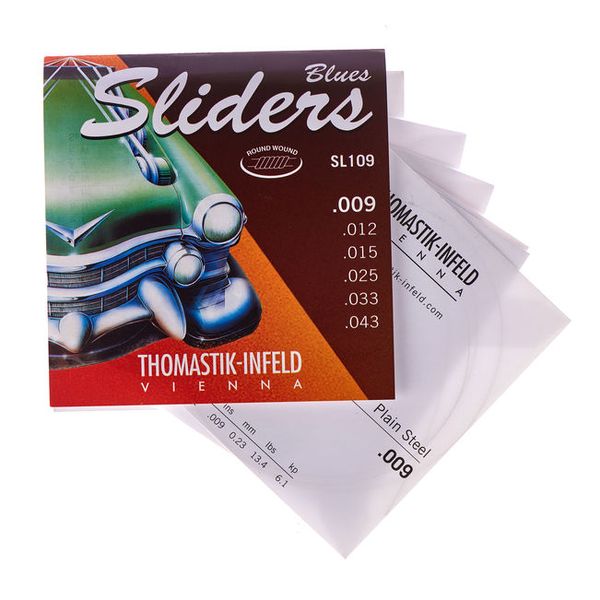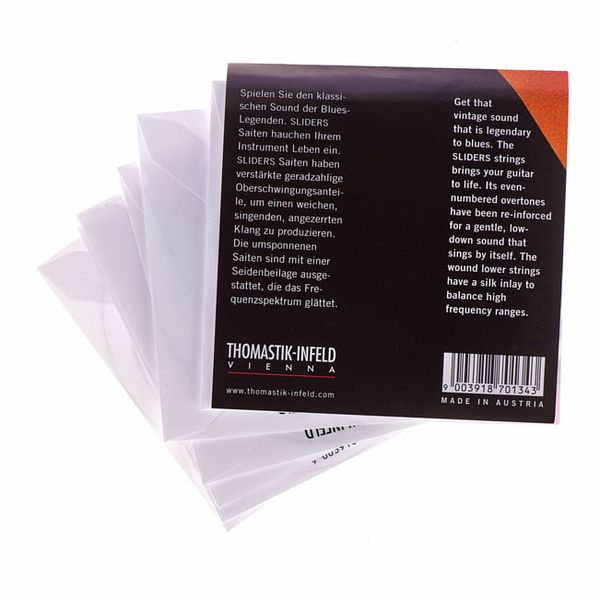After going down an string gauge from 10's to 9's on my strat copy I've been looking at various strings. Immediately prior to installing the Thomastik SL109 I was giving Ernie Ball 2223 Slinkys a run so could make a direct comparison.
Pros:
- very well made strings.
- come up to tune quickly and retain their tuning well
- same with intonation.
- Tactility. The guitar is a tactile instrument and these strings feel smooth and easy to play under the finger tips
- Balanced string tension. My first set featuring this and one of the reasons for buying. There's not a world of difference here but again the feel of the strings is more uniform and subjectively the guitar is a little easier to play.
- They look cool, with the silk insert on the wound strings and with the brass coating on the plain strings.
- Tone. If you like a somewhat rounded and smooth tone - ideally suited for blues and jazz in my opinion. Single notes have that mid-ranged singing quality that sits well in a mix.
- Sustain. Is good;for a set of 9's on a strat with floating tremolo.
Cons:
- not many. The SL109's are a little expensive but they do appear to hold their tonal characteristics uniformly and so string changes can be reduced.
- The lack of high frequency "sizzle" and "shimmer" - see below.
Discussion:
These string have significantly less higher harmonic content than the ubiquitous slinkies. It is not that they sound dead in comparison, high frequencies are there for sure, it's just like the "acoustic-like" shimmer you often get from new guitar strings is not present. This is by design and you either like it or don't. For me I was able to regain some high end complexity by adjusting the cut control on my Vox-like amp, re-EQing a bit. Irrationally this felt somewhat like cheating to me (it isn't of course).
So in summary for me:
- great high quality strings
- balanced tension is good - just not quite the game changer I kind of hoped it would be.
- Great tone, round and balanced and in particular suitable for those who don't like too much high end from their strats (e.g. Nyle Rogers, SRV (RIP), etc). I imagine these would be fabulous on an LP type guitar.
- Certainly I recommend trying them. They are just not quite for me as I want more sparkle on my tone and am willing to take more frequent string changes into account to achieve that. So I'm still looking but might revisit these strings later.
And finally an observation:
Manufacturers of balanced tension sets show how the string tension varies across string gauge and for different scale lengths, so for example the string tension is higher on an strat than a LP. However it is not the scale length that is important here - it is the whole length of the string that needs to be tuned to pitch that defines the tension. So on a strat for example it is the string length from the machine heads right through the tremolo block to the ball ends. And due to the headstock design this length changes per string. I don't see a manufacturer that has overtly considered this and therefore I question just how balanced the balanced tension sets are in practice. Or how important balanced tension is.







